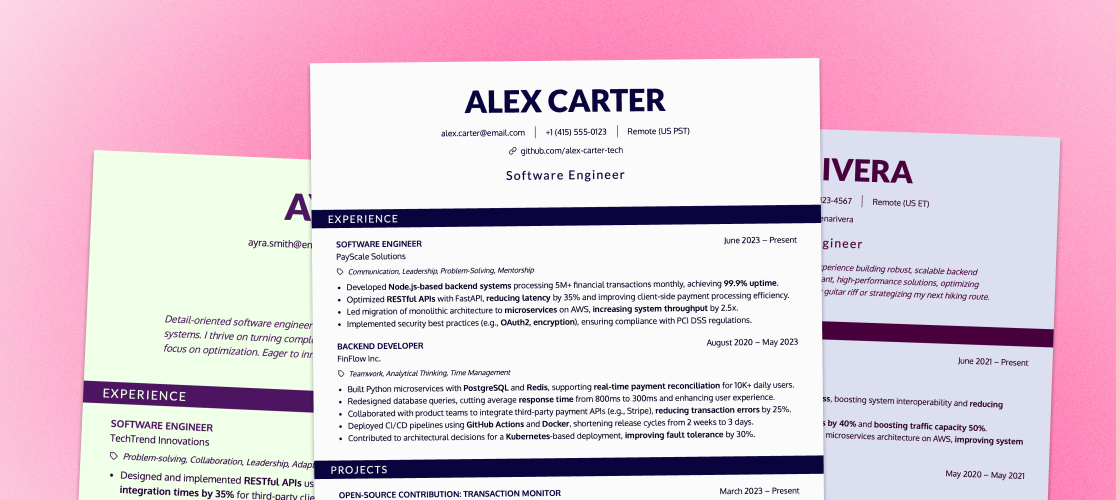
Harvard and Jake’s Resume Templates: why their LinkedIn-like structure wins recruiter attention
In today’s competitive job market, clarity and structure can make or break your chances. Two templates have quietly risen to the top of recruiter preferences: the Harvard Resume Template, endorsed by Harvard University’s Mignone Center for Career Success, and Jake’s Resume Template, a LaTeX-based format that first made waves among software engineers.
Both have earned their lasting popularity because they’re clean, familiar, and easy to scan. But there’s one detail that makes them a winning choice: their layout looks and feels just like a LinkedIn profile (exactly where recruiters spend most of their day).
When your resume feels familiar at first glance, it’s far more likely to survive the brutal 6 second scan that decides whether or not they call you for an interview. And since both Harvard and Jake templates are ATS-compatible too, they tick every technical box recruiters look for.
In this article, you’ll learn:
- Why Harvard and Jake’s resume templates are so effective in today’s LinkedIn-driven hiring world.
- The real difference between Harvard and Jake formats (and why it matters for your career stage).
- How to choose the best resume layout based on your experience level.
- How LinkedIn-style resume formats improve your odds with both ATS software and human recruiters.
LinkedIn shaped how recruiters scan resumes
Recruiters don’t just use LinkedIn, they live on it. Every day, they scan hundreds of profiles, training their eyes to spot the right signals fast:
- A sharp headline or professional summary.
- A reverse-chronological list of work experience, with achievement-driven bullet points.
- Skills woven naturally into the experience for real-world context.
- Education and certifications tucked neatly below.
- Side projects or volunteer work that quietly prove passion and expertise.
Over time, this constant exposure builds what we could call LinkedIn muscle memory. Recruiters aren’t reading; they’re pattern-matching. The Harvard and Jake’s resume templates tap directly into this brain training. Their single-column layouts, clean fonts, and structured headings mirror the flow recruiters are used to processing on LinkedIn profiles.
These resume templates aren’t about looking flashy, they’re about building instant trust, credibility, and fit in the precious few seconds you get.
Harvard resume template: best for students and early-career professionals
If you’re a student, recent graduate, or just starting your career, the Harvard Resume Template is ideal for you.
Designed by Harvard’s Center for Career Success, this resume format puts Education first, right after your contact details. When you don’t yet have a long list of work experience, your academic achievements, coursework, research projects, and the skills you built along the way become your biggest selling points.
The Harvard format keeps things clean and recruiter-friendly: a simple one-column structure, text-only design, and bullet points that highlight real accomplishments (think: “Led a research project that secured $10K in funding”), all making it fully ATS-compatible.
There’s one important caveat: the term “Harvard Resume Template” gets thrown around loosely online. If you reorder the sections to prioritize work experience, you’re no longer following the true Harvard format. That said, the trend highlights something bigger: recruiters love clear, ATS-optimized resumes, which is why Harvard’s layout often gets recommended for all experience levels. But if you’re still early in your career, sticking to an education-first format like the true Harvard resume can give you a serious advantage.
Jake’s resume template (and example for Software Engineers): best for experienced professionals
If you’ve been in the workforce for a few years, Jake’s Resume Template might be exactly what you need to stand out.
Originally created by Jake Gutierrez and shared on Overleaf under an MIT License, this resume format took off among software engineers and tech-savvy professionals, especially in online hubs like Reddit’s r/EngineeringResumes.
People love it because it nails the essentials:
- Clean, recruiter-friendly design that sails through ATS filters.
- Open-source flexibility via LaTeX (for those who like to tweak every detail).
- Professional polish without any unnecessary fluff.
While the original version is LaTeX-based (meaning it requires some technical know-how), platforms like CandyCV now make this experience-first resume template accessible to everyone, producing sleek, recruiter-ready resumes without the need for coding.
Unlike Harvard’s education-first approach, Jake’s template often places Experience or Projects first, making it ideal for:
- Professionals with 2+ years of work experience.
- Career changers highlighting transferable skills.
- Senior candidates showcasing leadership or technical impact.
 |
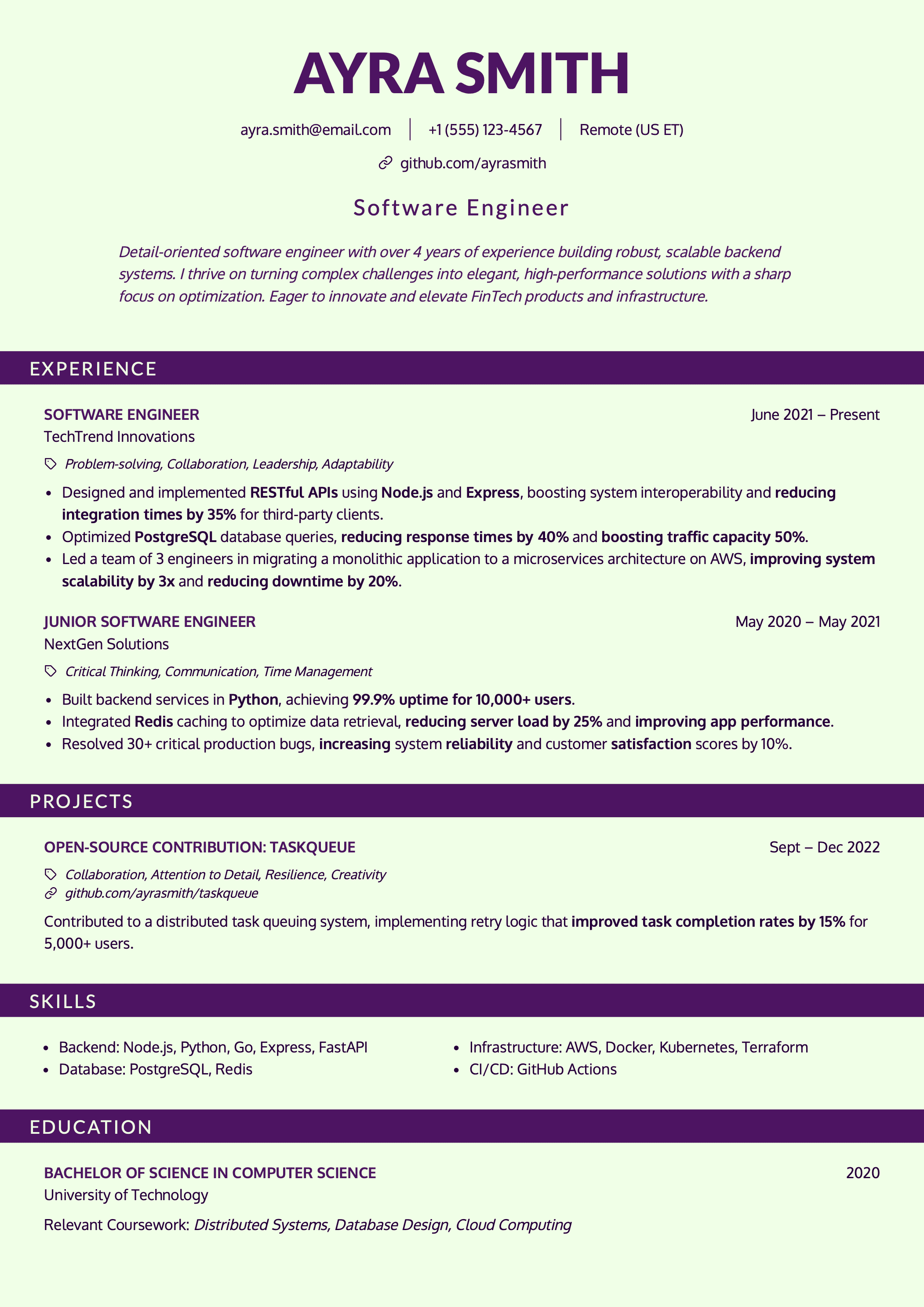 |
I've used CandyCV to create these resumes.
This experience-first structure matches how recruiters actually think. In fact, 65% of hiring managers say they prioritize relevant experience over education when reviewing resumes. And especially in tech, projects like “Built and deployed a full-stack web app using React” often carry more weight than a degree.
So if you’ve got strong experience or project wins to showcase, Jake’s Resume Template can help you put them front and center, where recruiters are looking.
Check how to write effective work experience and tips to convert tasks into achievements.
Drawbacks and when to consider alternative resume formats
While both the Harvard and Jake templates shine in most scenarios, they aren’t perfect for every situation. Here’s where you might want to think twice:
- Generic risk: its widespread use means you’ll need strong, customized content to stand out. Otherwise, you risk blending into a sea of similar resumes.
- Not ideal for creative fields: minimalism is great for clarity, but in industries like design, marketing or media, a bit of visual flair works better (in fact, it is expected).
When to use other resume formats:
- Creative industries: two-column or visually dynamic resumes can better showcase your style and creativity (highly valued for roles in design, media, or marketing). Just be careful: if the format is too unconventional, you might run into ATS parsing errors. That said, modern ATS systems can now parse almost any layout with incredibly high accuracy. A good rule of thumb: use more creative formats for direct recruiter submissions, and stick to classic layouts when applying through an ATS.
- Career changers: functional resumes aren’t the best move. As we discussed, recruiters overwhelmingly prefer reverse-chronological formats. Both the Harvard and Jake templates outperform functional resumes in ATS compatibility because they clearly outline education, experience, and skills in a structured way.
- Non-ATS environments: small firms, startups, and personal referrals often don’t rely on ATS. In those cases, you can get a little more creative with your layout without worrying about parsing issues.
Tips for success with Harvard and Jake templates
To maximize your resume’s impact, follow these tips:
- Tailor it to the job: mirror keywords from the job description to boost your ATS score and probability to resonate with what the recruiter is looking for.
- Quantify your achievements: replace vague statements with specifics. For example, instead of “Managed a team”, say “Led a 10-person team, cutting project delays by 20%”.
- Ensure ATS compatibility: stick to standard fonts, avoid tables or graphs, and choose the right file type (.docx or text-based PDF). Check out more information about how ATS work here.
- Add digital links: recruiters expect easy access to your online presence. Include LinkedIn, GitHub, or personal portfolio links where relevant.
- Proofread thoroughly: grammar and spelling mistakes are one of the top red flags for recruiters, according to Harvard’s resume guidelines, so proofread as if your job was on the line.
👉🏼 Check this guide for more tips on how to write a great resume.
How to choose the right resume template
Choosing between the Harvard and Jake templates isn’t about picking a “better” format, it’s about aligning your resume with the mental models recruiters use daily, shaped by LinkedIn and years of scanning resumes at lightning speed. By mirroring LinkedIn’s structure and prioritizing clarity, these templates make it easier for recruiters to scan, connect the dots, and call you.
The real difference between these two formats is what you showcase first, depending on where you are in your career.
Choose Harvard if:
- You’re early in your career and your education is one of your main selling points.
- You graduated from a prestigious university and want to highlight it.
Choose Jake if:
- You have solid work experience or standout projects.
- Your professional achievements speak louder than your education.
Choosing the right structure ensures your resume matches how recruiters actually think, giving you a real advantage in the 2025 job market.
At CandyCV, we offer polished, modernized versions of both the Harvard and Jake resume styles, ready for you to customize and start getting interview calls.
We're two product builders who care about quality, taste and doing things right. We want you to get that job you want, plain and simple. That's why we are building CandyCV to help you create a great resume and land a job for free. If you give us a try (and feedback!), we'll be forever grateful 😊
Alba Hornero
Co-founder and Product Builder
As CandyCV’s co-founder and a former product lead in HR tech, I’ve built ATS tools, optimized hiring processes, and interviewed hundreds of recruiters. I personally write every post with the intention to provide real, high-impact job search advice that truly helps you land your next role.

Labor Trends in 2025: in-demand sectors and skills with the most job opportunities
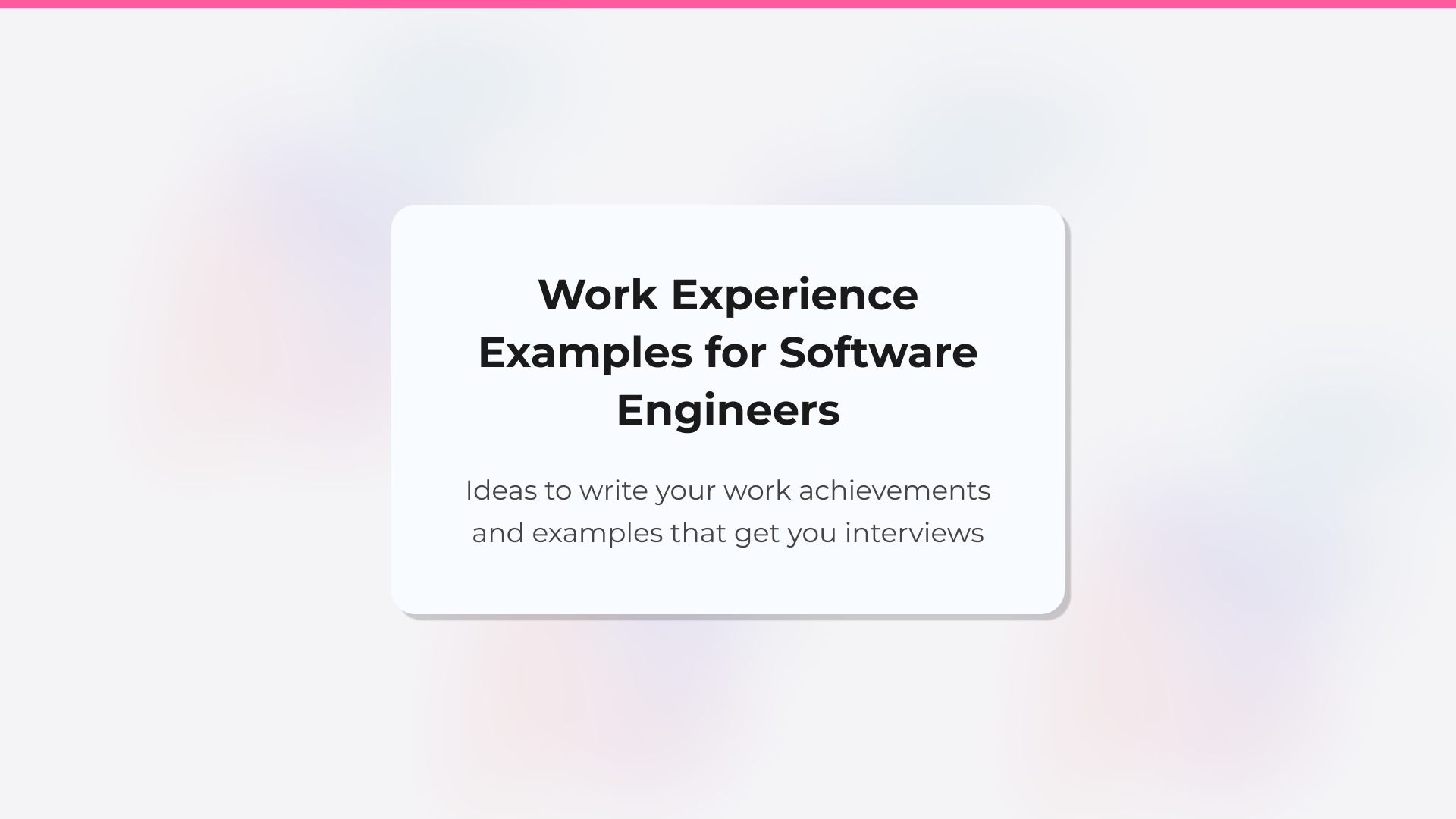
Software engineer resume: work experience and achievements examples
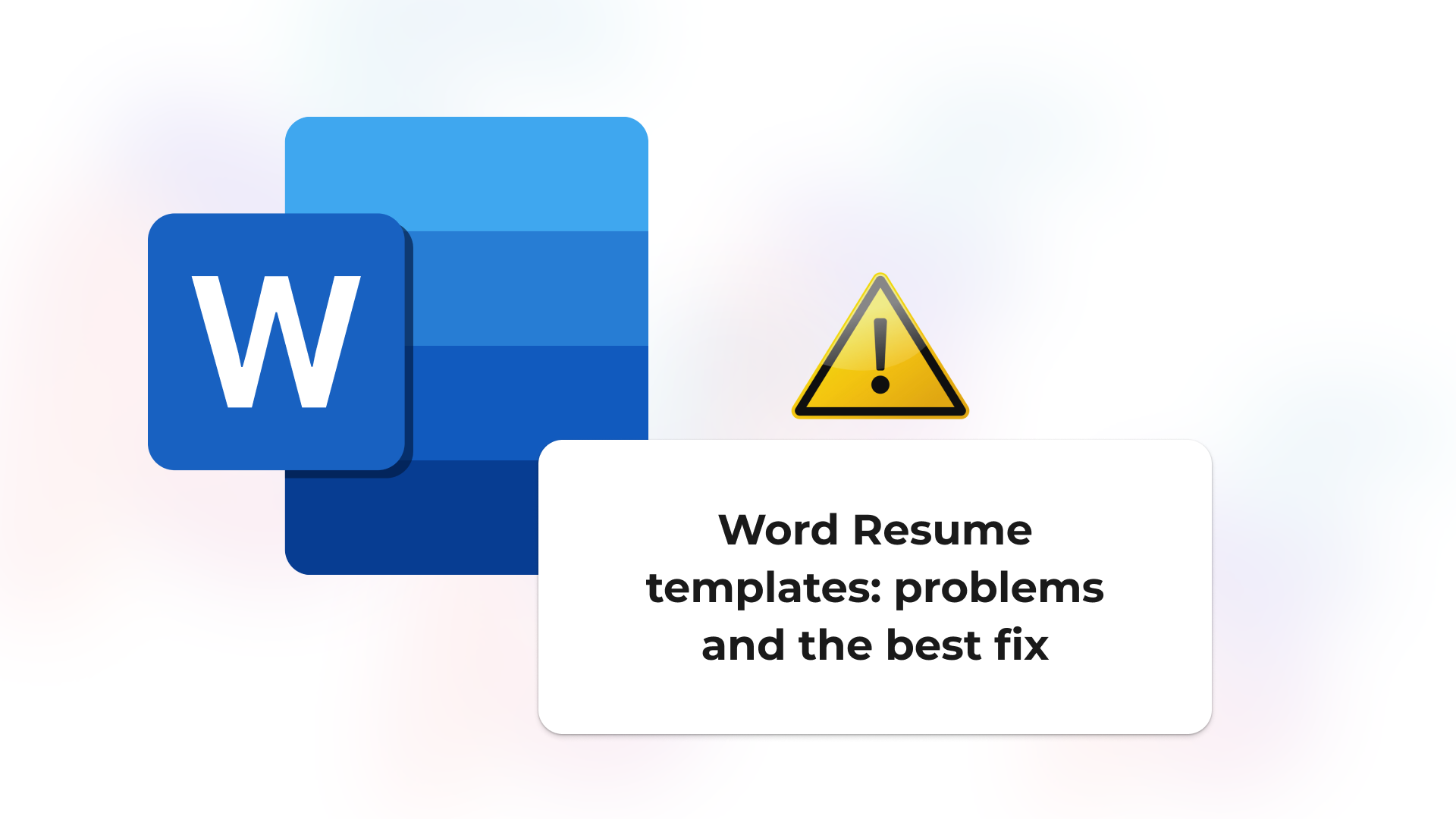
Free Word resume templates: why you shouldn't use them (and the best alternative)

How to list Education and Certifications on your resume (with examples)
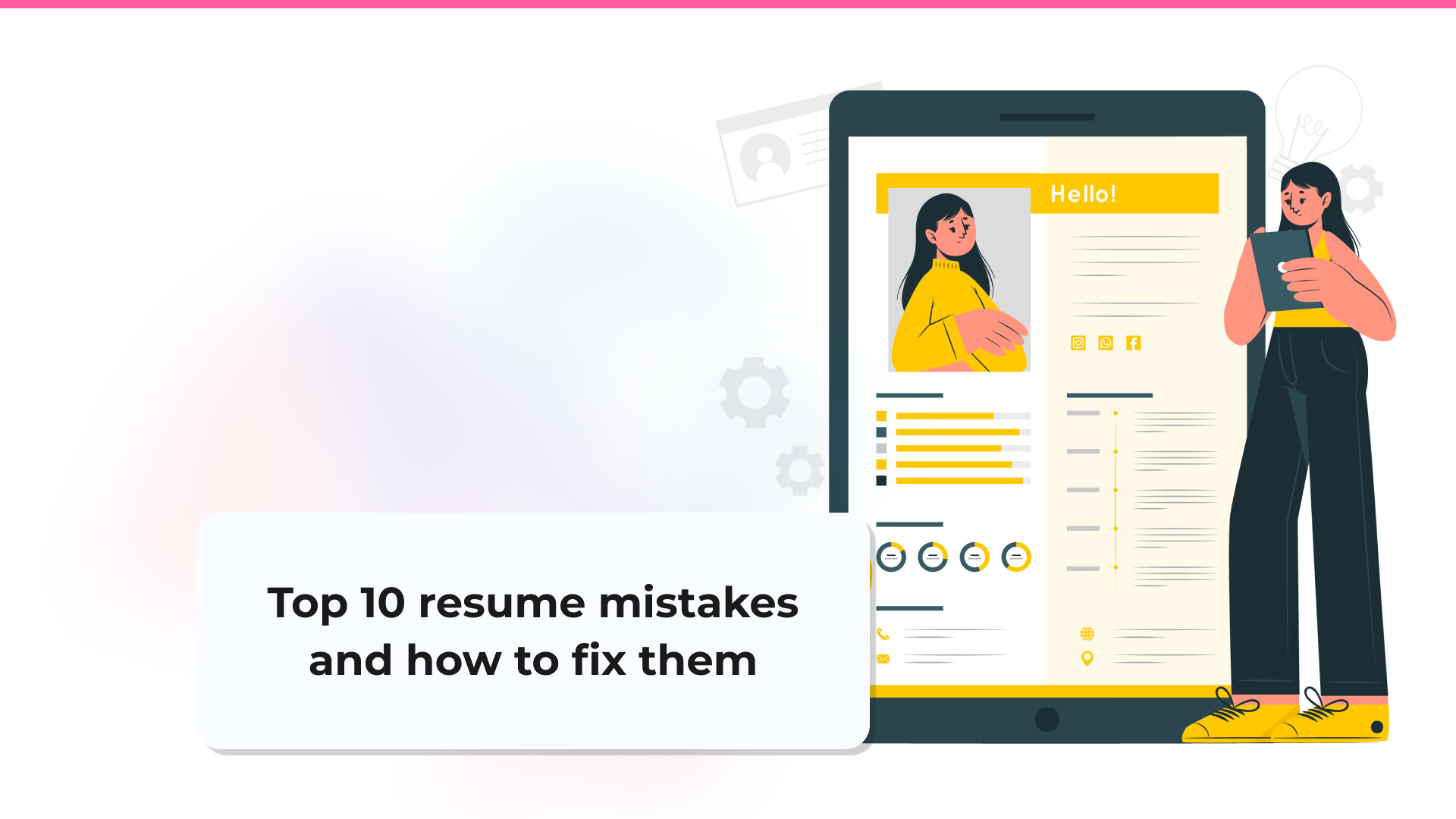
Top 10 resume mistakes to avoid in 2025 and how to fix them
